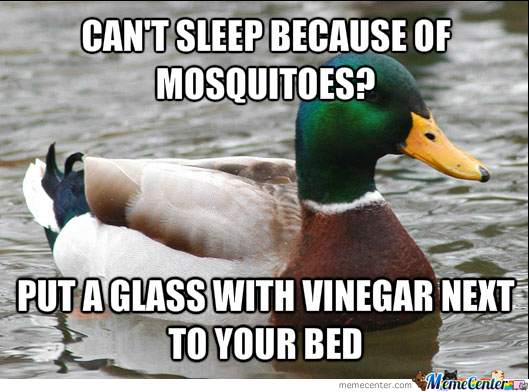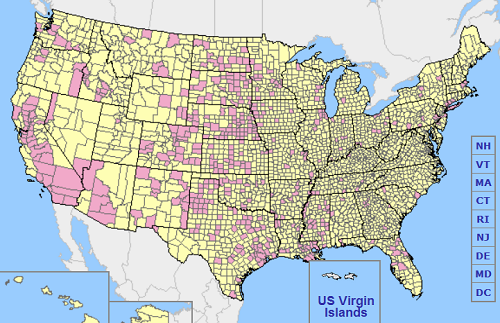
Nothing beats the experience of having fun outside. The simple joy of the relaxing touch of a cool breeze outdoors is hard to beat.
But there’s one spoiler everybody hates; bugs! Particularly mosquitoes.
Aside from the obvious annoyance that they bring, there’s also a risk that the victim may contract some of the life threatening diseases that only these tiny vampires spread.
They carry bacteria and viruses that cause dengue, malaria, yellow fever, West Nile, and chikungunya.
From childhood, almost every individual has a preconceived notion about mosquitoes. Some may be true but majority are just myths or old age beliefs. Here’s a comprehensive list of the most common myths people have about mosquitoes:
Myth #1 All mosquitoes feed on human blood
Most people think that all mosquitoes bite and feed on human blood. But if this is true, why do you think majority of mosquitoes choose to live in the wild or outdoors instead of the city centers where there are millions of humans to prey on?
The truth is; there are approximately 3500 mosquito species on the planet. And each specie has its own favorite food source from fruits, nectar, animal and human blood. And from the few species that bite humans, did you know that only the females do so?
So when you happen to swat a mosquito on your arm or leg, you can be certain that it’s a female trying to produce some eggs with the help of your blood.
Myth #2 The more blood they suck, the bigger the welt
The size of a mosquito bite welt has nothing to do with the amount of blood drawn by a mosquito. It has to do with how your immune system responds to the skeeter’s saliva that’s been injected into your skin.
Myth #3 Disease-causing mosquitoes are only located in Africa and the Tropics
Majority of the news reports concerning the spread of mosquito-related diseases are on Africa and the Tropical regions.
This makes Americans believe that such diseases are only confined on these regions and can’t reach the US. This belief is false. Although the population of mosquitoes in colder countries is relatively less than those located in the south, the risk of you getting a disease from a mosquito bite is always there.
Perhaps, one of the reasons why news reports in the US don’t stress these diseases much compared to the countries in the South is that we have better ways in managing and treating them unlike in certain African, Asian, and Latin American countries.
And did you know that certain disease-causing mosquitoes now present in the US actually originated from the south particularly in Asia?
The Asian tiger mosquito which causes dengue, yellow fever, West Nile, dog heartworm, and chikungunya are thriving in the temperate, marshy, and wet southern states like Louisiana, Missouri, and Ohio, etc.
Learn about the most effective weapon in the battle against the biting bugs.
Myth #4 Mosquitoes choose who to bite
Are you pregnant? Have a sweet blood? Or, are you fond of eating certain foods like beer? Our next myth is on the notion that mosquitoes tend to become picky when it comes to their prey.
People believe that mosquitoes are more attracted to pregnant women, those with certain blood types, and those who love certain foods.
Yes, there are instances where one person is more attractive for the flying pests than others. And the explanation for this is not found on the myths above.
Experts note that mosquitoes can bite humans regardless of age, gender, blood chemistry, or food preferences.
The only thing that makes you more attractive is your body heat and the amount of carbon dioxide you emit.
So if you tend to sweat more, have a warmer body than your seatmates, or exhale more, chances are, mosquitoes can easily sense and track your location.
Pregnant women tend to produce more body heat, so this explains why they are a good target for mosquitoes.
Myth #5 Mosquitoes have 47 teeth
Mosquitoes don’t have teeth at all. The tiny hose or needle-like thing you see attached to their mouths is called the proboscis.
It’s like a pointed straw that can be used to sip blood. Instead of teeth, the tip of the proboscis has 47 sharp edges that make it easier for a mosquito to punch a hole in your skin.
Myth #6 A mosquito can explode if you flex your muscles
Perhaps, you are thinking of over-supplying a mosquito with blood to give it a taste of its own medicine and just explode.
This is false since mosquitoes have their own control as to the amount of blood they can sip. Additionally, flexing your muscles or making similar movements may just signal the mosquito to fly away.
Myth #7 Mosquitoes pee on you when they bite
After mosquitoes have filled their bellies with too much blood, they have to excrete something out of their body to still be able to escape and fly.
For the Anopheles mosquitoes, it’s actually a plasma fluid not urine. For others, they secret fluid-like waste and people just used the generic term urine for it.
Myth #8 Natural repellents are the best solution for mosquitoes
Almost everyone now is going green or finding natural and alternative solutions to the most common problems we have.
So you might think that choosing natural repellents is probably the best way to scare off mosquitoes. Not to mention the many affirmative testimonials you see on TV, right?
These repellents come in the form of extracts, essential oils, or the plant itself like citronella, lavender, peppermint, etc.
Yes, they all have their mosquito-repelling properties but based on actual studies, they are less effective than their commercial or chemical counterparts.
It’s lesser effective when you use the spray or candle-based repellents for one obvious reason; when the wind blows in a certain direction, that supposedly blanket of protection is easily distorted.
With natural repellents it’s similar to mosquito repellent plants, technically they work but there are quite a few buts and ifs.
Myth #9 The latest gadgets and devices are effective
If the natural repellents are less effective, then perhaps the latest devices like the ultrasonic sound emitter and electric traps should do the trick?
Unfortunately not. Don’t buy the ultrasonic device yet that promises to drive away and even kill mosquitoes, cockroaches, rodents, etc.
Such wonderful claims you see on TV are all just part of the marketing ploy by their sellers. There’s no solid scientific evidence yet providing these claims.
Try that ultrasonic sound emitting device and you will see the frustrating results. If you have a high resolution camera or scope, the mosquitoes might even be laughing at your new trick.
On the other hand, electric mosquito trappers and killers can be effective IF and ONLY IF you could lure the mosquitoes inside them. Remember that mosquitoes are attracted more to heat and CO2 emission than light. Bug zappers work for most people too.
However, there are gadgets that do work (depending on your skills) and provide a metric tonne of fun. We’re talking about the Bug-A-Salt Camofly 2.0.
Myth #10 Chemical repellents are dangerous for me and my family
The thing that might be keeping you from trying the lotion and other commercial repellents is the possible risk on you especially your children’s health. Majority of commercial repellents contain the DEET or Diethyl-meta-toluamide as their main insect-repelling ingredient.
If you are buying a cheap, all-green, organic, ‘wellness-guru-approved’ repellent which wasn’t approved by the FDA or other relevant agencies, then there’s a reason for you to worry. But if you are going for the legitimate and trusted brands, there’s really nothing to worry.
DEET is relatively safe and regulatory agencies often put concentration limits which can be put into lotions and other products for human use. Of course, it could be harmful if you try to eat the repellent lotion instead of putting it into your skin.
Myth #11 Eating garlic, banana, and taking vitamins lets your body repel mosquitoes
Another common misconception is that you can actually make your body less attractive for mosquitoes by consuming certain types of foods like garlic and banana and taking vitamins primarily B-complex.
Trying to drive away these little vampires with garlic has always been part of the traditional belief.
But again, there’s no scientific evidence yet proving that the body can become a natural repellent if you eat or take garlic. If it’s effective for you, maybe the mosquitoes are just afraid of your bad garlic breath.
Another common misconception is that garlic is an effective repellent. It does have a moderate repellent effect when rubbed on the skin [93], although there are far more effective repellents available that also have a more pleasing odour. The consumption of garlic however, has not been shown to be effective at repelling mosquitoes. Source: PubMed
B-complex on the other hand may be effective with certain skin and parasite concerns like fleas but it’s also not proven to drive away mosquitoes.
Eating bananas will not attract mosquitoes and taking vitamin B-12 will not repel them; these are old wives’ tales.
says, Jonathan Day, professor of medical entomology at the University of Florida, Vero Beach.
Myth #12 Bats can help you solve the mosquito problem
You might have also heard that bats eat mosquitoes so you are interested in making them your next best friend.
Skeeters are simply too small for bats to make interesting prey. This PubMed study notes:
..mosquitoes generally represent only a small proportion of bat diet.
The fact is that bats eat both fruits and insects. And for those insect-eating species, they really don’t like mosquitoes that much unless of course when there’s no longer anything to eat. Maybe you’ll have better chances with house lizards.
Read this post for truly effective ways to rid your yard of mosquitoes.
Myth #13 Dryer sheets are the solution
There are two ways as to how people think dryer sheets drive mosquitoes away. The first one is by simply carrying it in their pocket as an alternative repellent. For this one, it hasn’t been proven to be effective.
The second way is to use the dryer sheet to wipe all their body sweat and throw it away or place it somewhere else to trick mosquitoes and prevent them from targeting you.
This method is not recommended especially since they are not meant to be used for the body or skin. Instead of doing something good, it might just cause problems for you in the future.
Myth #14 Mosquitoes don’t cause problems in the summer or dry seasons
If you are observant enough, you may notice that mosquitoes are more active and the numbers are huge during the wet or rainy seasons.
But this doesn’t mean that there won’t be mosquito problems during droughts or dry conditions.
There’s a greater tendency for them to breed and live in stagnant and highly concentrated water. As the water gets more concentrated, it’s getting dirtier meaning the chances for a mosquito to bring viruses and diseases could even be higher.
What’s more
Also, according to Snopes, Listerine and lemon dish soap do not repel skeeters (#15, #16). What isn’t a myth but a cold hard fact is the following,
The more often you get bitten by a particular mosquito species, the less you are likely to react to that species over time (less itch, smaller welts, welts that disappear sooner)
The bad news? There are more than 3,000 species worldwide.
Which mosquito myth do you know?
Drop a comment below.
